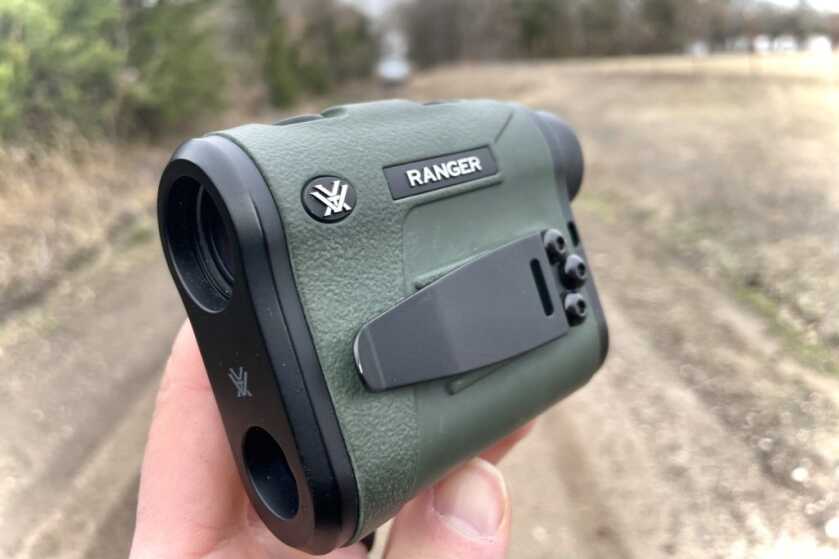
A few years ago, Vortex Optics entered the laser rangefinder game and shook up the industry. Offering multiple options and expanding that lineup to what it is today, this Vortex rangefinder is designed to fit almost all your needs. Competing in the mid-range of affordability, the Vortex Ranger 1800 packs a lot of performance for the price.
Vortex Ranger 1800 Specifications:
Range Reflective (yards): 10-1800 yards
Range Deer (yards): 10-900 yards
Accuracy: + / – 3 yards @ 1000 yards
Max Angle Reading: + / – 60 degrees
Magnification: 6x
Objective Lens Diameter: 22 mm
Linear Field of View: 315 feet/1000 yards
Angular Field of View: 6 degrees
Eye Relief: 17 mm
Length: 3.9 inches
Width: 3 inches
Weight: 7.7 oz
While many modern rangefinders have started to include Horizontal Component Distance or HCD mode, this is a very helpful feature included in the Ranger 1800. When utilizing HCD mode, this rangefinder will use trigonometry to automatically account for any elevation change between you and your target to calculate the true horizontal distance. This feature allows shooters to range their targets in seconds, then dial and hold for the calculated yardage without accounting for the angle differential in second-hand ballistic calculations.
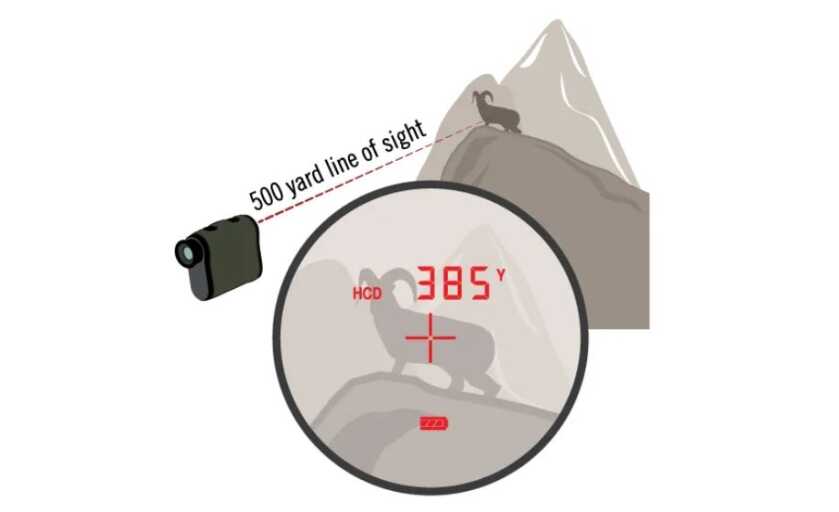
Boasting the capabilities to range reflective targets out to 1800 yards, and deer out to 900, the Ranger is designed to be more than adequate to cover any of your practical hunting needs. Vortex states that HCD mode is ideal for the following situations:
• Rifle shooting on level ground at any range.
• Rifle shooting out to ranges of 800 yards with mild slopes (less than 15 degrees).
• Rifle shooting out to ranges of 400 yards with moderate slopes (15 to 30 degrees).
• For all archery shooting
While HCD should have most situations covered, users will still be able to use Line Of Sight mode (LOS) to measure the true distance from the rangefinder to the target. The Ranger will also read off any change of elevation as a measurement of angle when used in LOS mode. Vortex states that this mode is ideal for “rifle shooters who are using slope correcting ballistic drop data cards, ballistic cell phone applications, or other devices with ballistic programs and who are shooting at distances beyond 500 yards and with slopes greater than 15 degrees.”
Also included is a scanning feature. By pressing and holding the “measure” button, the Ranger will show a blinking “S” on the bottom left side of the display to notify you it is continuously scanning. This allows users to measure multiple distances as they pan the crosshairs back and forth across target objects. Releasing the measure button will stop the continuous scanning feature, and display the last measured distance.
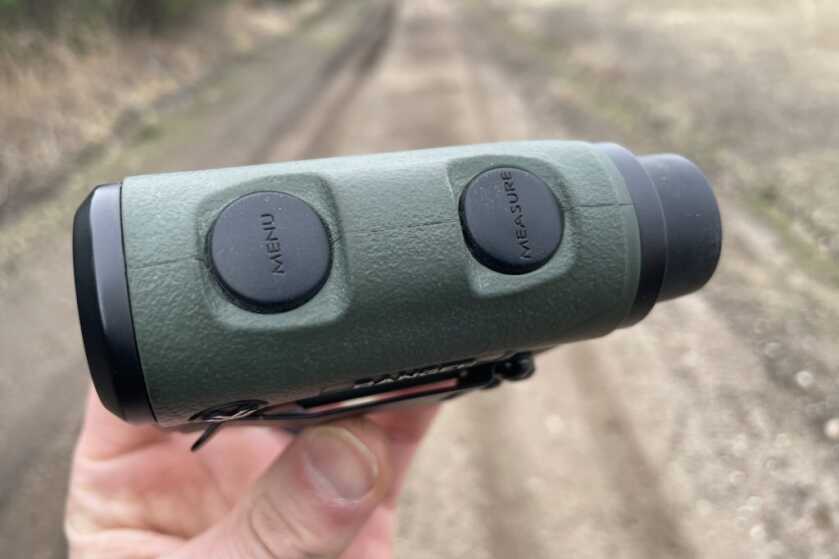
The menu is simple and intuitive. Pressing and holding the menu button for at least four seconds will allow users to change modes. Pressing the menu button will toggle between brightness settings, LCS/HCD selection, or yards/meters as the preferred unit of measure. Pressing the measure button will toggle through each of these previous modes to allow users to select the readings they desire. To save the settings, just press and hold the menu button again for at least 4 seconds to return to the standard power-up condition. Something that came up but was easily fixed arose while I went to set up targets and had a buddy range things for me. My friend thought the batteries were dead at first, but after going back to check it out, the brightness was just on the lowest setting. On a bright and sunny day, this was not readable at all, but after holding my hand in front of the objective, I could see the display and adjust the settings to maximum brightness to fix the issue. However, I also found that this rangefinder can be hard to read on sunny days when ranging against light-colored backgrounds (dead grass, snow, etc.) even after being set to the maximum brightness setting. The crosshairs were dim and not very easy to pick up. Squinting we were able to make it work, but this was not ideal and should be noted.
While Vortex boasts the ability to range reflective targets out to 1800 yards and deer out to 900, I did not get these results. While ranging a perfectly perpendicular reflective target, I may have been able to get readings out to 1800 yards, the furthest I could get a reading was at 1268 yards on a water tower. Street signs seemed to be too small at that distance to pick up, and the water tower I guess was not reflective enough to range from any further back. I could range trees out to about 750 yards, but beyond that, I was not having any luck. While I would have thought brick or roofing tile would be more reflective than trees, I couldn’t get a reading on residential houses past about 600 yards (not squared up, ranging them at an angle). However, ranging steel or tin buildings wasn’t an issue out to around the 1200 yard mark.
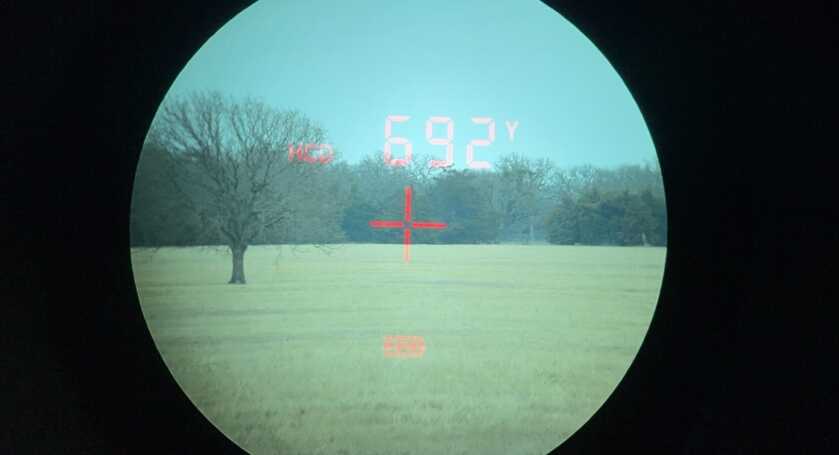
While Vortex specifies accuracy of +/- 3 yards at 1000 yards I wanted to test out its precision in a short and quick test. Marking every 5 yards out to 145 yards using a tape measure, I then tested and recorded the range measured with the Ranger 1800 and each location was spot on. Throughout each of the locations, the measured distance wasn’t even off by 1 yard.
The Ranger 1800 is both robust and durable. First off, the housing utilizes a sort of “rubber armor” which provides a better non-slip surface, and durable external protection. Being both compact and lightweight, the Ranger makes it easy to pack along for any adventure. Not too small to slip around or be hard to hold steady when ranging, and not big enough to be burdensome when storing in your kit. Designed to be waterproof, the adverse environments you venture into shouldn’t phase this rangefinder. The body also features a reversible utility clip, tripod socket for mounting, two lanyard cuts, and an adjustable diopter. It feels solid, and the body fits my hand well. As with all of the products produced by Vortex, the Ranger 1800 features an unconditional, unlimited, lifetime warranty.
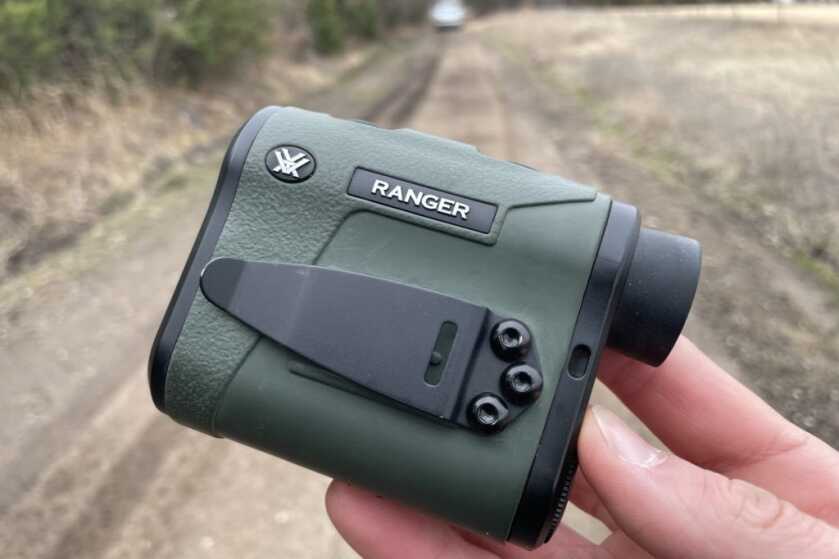
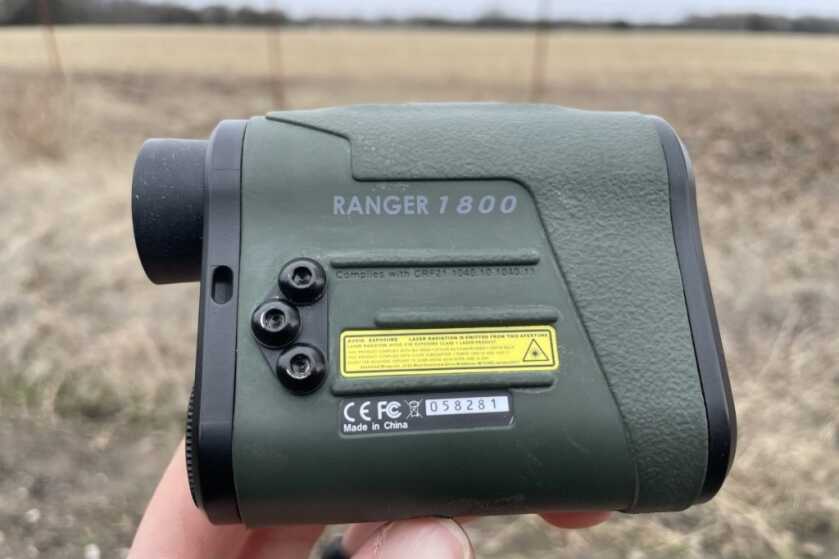
The Ranger 1800 is powered by a single CR2 battery and is supposed to last for at least 2,000 different actuations. Many factors will play into how long a single battery may work, and the largest may be temperature. Cold temps are hard on batteries, so packing a spare would never be a bad idea. Toggling between the three display brightnesses settings will also affect battery life, but a cool feature is an auto-shutoff after about 5 seconds of inactivity. Replacing the battery is quick using a flathead screwdriver or some equivalent, but I will advise being careful. The battery cap is made from some hard plastic, and when I tried loosening the cap with a bullet casing, I gouged it pretty bad.
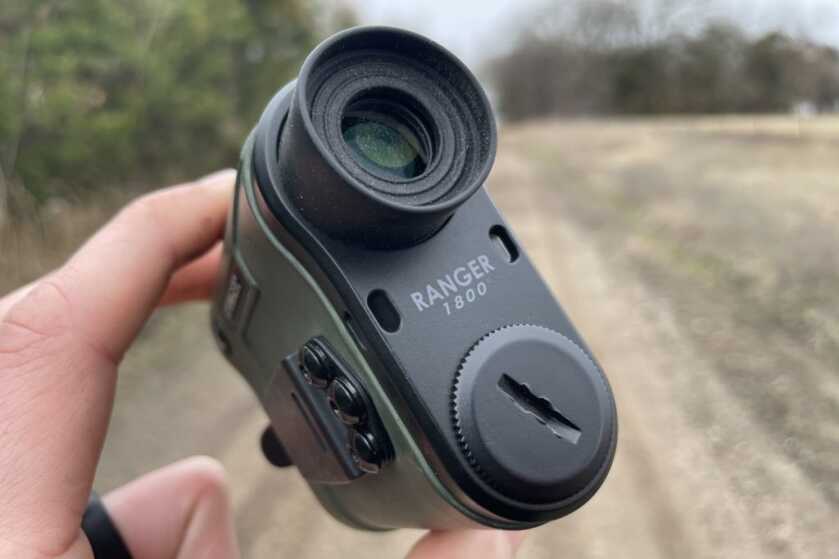
For the price, I am not disappointed with the glass clarity of the Ranger. Vortex used their Fully Multi-Coated glass which is made to increase light transmission and eliminate glare. The image is clear, and as for edge distortion, there is nothing to note. The MSRP for the Vortex Ranger 1800 is $499 and while I was not able to range targets as far as advertised, the performance provided by this compact unit is still pretty impressive.
The user manual can be found by clicking the link below:

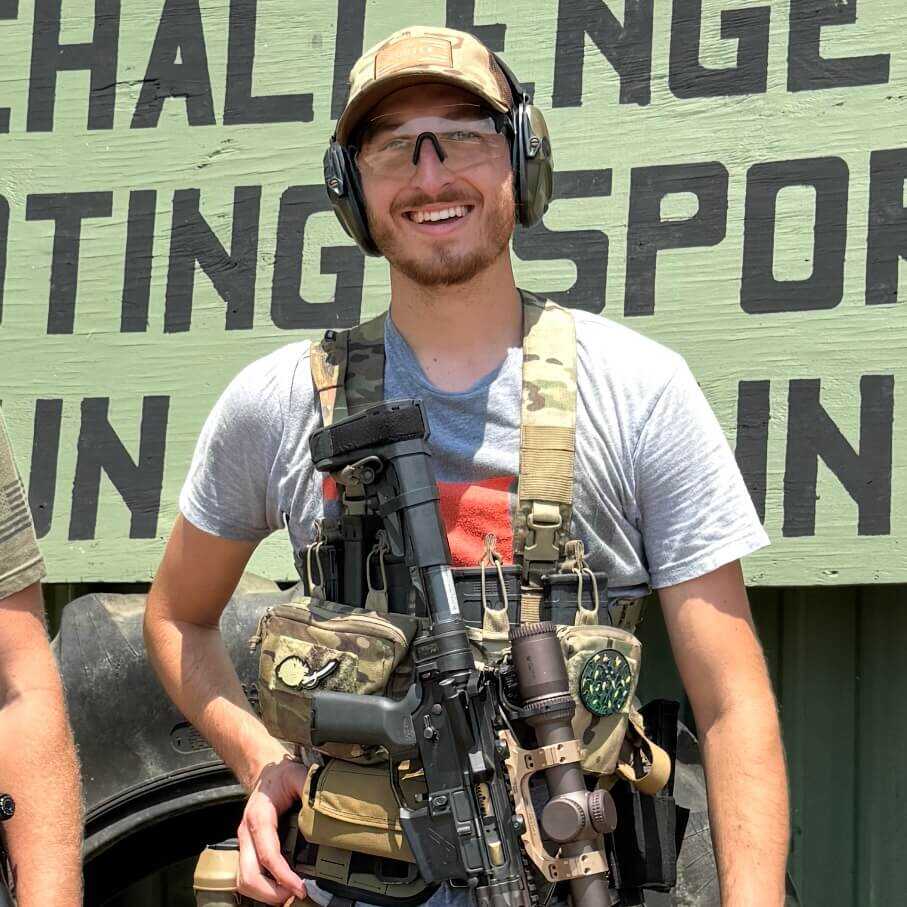
My name ls don graf. We must have some ties going back a way. Read a few of your articles & just wanted to say hello.